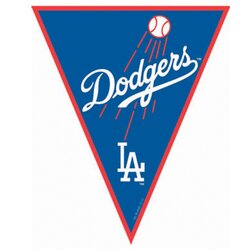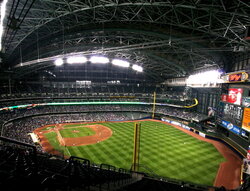MLB Notebook: 2025 Awards Recap
Major League Baseball handed out its hardware this past week, with award winners being announced each day, culminating with the MVP announcements at a ceremony in Las Vegas. As expected, Shohei Ohtani was a unanimous pick for NL MVP, and Paul Skenes also received all 30 first-place votes for NL Cy Young. As expected, Tarik Skubal won the AL Cy Young comfortably. And in the high-drama race, Aaron Judge prevailed over Cal Raleigh for the AL MVP.
The votes were all cast right at the end of the regular season and before the start of the playoffs and announced now. For comparison sake, TheSportsNotebook did complete All-Star teams for both the American League and National League at that same time, including our top-5 choices on the MVP ballot and top-3 for the Cy Young. Based on that, here’s some general reactions to what happened, both on the top line and down ballot.
IGNORING PARK EFFECTS
On the American League side, both winners clearly had the best statistical production. Just as clearly, both benefited from their home parks. Judge plays in hitter-friendly Yankee Stadium while Raleigh is in a pitching-friendly atmosphere in Seattle. Skubal pitches in the vast expanse of Detroit’s Comerica Park, while runner-up Garrett Crochet calls cozy Fenway Park home. The voters either ignored the impact of the home park on stats, or felt it didn’t matter.
I write this as observation not as judgment. My own verdict was split. I gave Judge the nod on my MVP ballot. His massive edge on Raleigh in batting average was too great to ignore. Also, while it might seem counterintuitive, Judge’s supporting cast wasn’t as good as Raleigh’s. The Yankees have some big names in that lineup, but a lot of them were either injured, unproductive or just getting old. Raleigh was at least supported by Randy Arozarena and Julio Rodriguez.
In the Cy Young race I was a dissenter, opting for Crochet, believing that Skubal’s only real advantage was a 0.38 point edge in ERA, and that could easily be chalked up to the difference in home park.
There were good arguments to make both ways and I have no serious beef with any voter who felt differently on either race. This wasn’t like ignoring Darryl Strawberry in 1988 or Rod Carew in 1976. Whether you wanted Judge or Raleigh, Skubal or Crochet, there were good arguments to be made. So long as the difference in where they played and who they played with was given due diligence when it was time to vote.
THE CASE FOR KETEL
On my NL MVP ballot, I had Arizona Diamondbacks second baseman Ketel Marte in second. To say the voters and I saw it differently is an understatement—of the 30 ballots cast, with players ranked 1 thru 10, Marte was only named a single ballot—and that was for ninth place.
Kyle Schwarber finished second and Juan Soto clocked in third. I had the Phillies’ DH and the Met rightfielder at third and fourth and said I could see an argument for either one going as high as second, so I won’t split hairs on that point. I did not see Marte sliding to irrelevance.
Nor is this because Arizona had a disappointing season. Another middle infielder from the desert, Gerardo Perdomo finished fourth. What gives?
If it’s strictly Perdomo vs. Marte, I can at least understand where the voters were coming from. Perdomo played 35 more games and a had a slightly higher batting average and on-base percentage. Perdomo is also a base-stealing threat, and I suspect hitting the RBI total on a clean 100 gave him a little extra cache. But Marte outperformed his teammate on slugging percentage, and even with the fewer games, outhomered him 28-20.
I was also moved by the fact that Marte was far and away the National League’s best second baseman, whereas Perdomo (whom I also chose for my All-Star ballot) had to edge out Trea Turner in Philadelphia and Francisco Lindor for the Mets. That’s not Perdomo’s fault, but it does speak to comparative value at a position—which is at least part of what we’re trying to assess in an MVP vote.
Again though, I won’t split hairs with anyone who thinks Perdomo should have been higher than Marte. Where I will start splitting hairs is completely ignoring a second baseman who, at an otherwise weak offensive position, finished with a .376 on-base percentage and .517 slugging percentage. One ninth-place vote? In a world where, for example, Milwaukee DH Christian Yelich, was named on nine ballots and got as high as fourth?
I know a lot of fans don’t care about what happens down ballot, especially in a year where Ohtani as winner was so obvious. But we track that stuff for the historical record here. Whatever Marte’s ultimate legacy as a player is, he got the shaft in this year’s MVP vote.
MILWAUKEE’S OVERLOOKED ACE
My other area of notable down-ballot dissent also came in the National League. While Skenes was an obvious Cy Young choice and Philly’s Cristopher Sanchez a just-as-obvious runner-up, I felt like Brewer ace Freddy Peralta should have been a clear third-place finisher. Instead, Peralta finished fifth, behind Dodger World Series hero Yoshinobu Yamamoto and Giant workhorse Logan Webb.
Peralta won 17 games and finished with a 2.70 ERA. Yamamoto’s home park being pitcher-friendly Dodger Stadium can explain his edge with a 2.49 ERA, and he only got to 12 wins, even with that potent lineup supporting him. Again, it’s important to remember that these votes were cast before we knew about Yamamoto’s Fall Classic heroics and are thus irrelevant to this debate.
I could see an argument for moving Webb up to third, simply based on his decisive edge on both Peralta and Yamamoto in innings pitched. And in any case, the difference between third and fifth isn’t dramatic, even if you do care about down-ballot stuff. But in our historical tracking, we tend to use top-3 as the benchmark. It’s personal preference, not scientific, but it explains my interest in the 3-line on the Cy Young ballot.
MIDWEST MANAGERS OF THE YEAR
It’s hard to do what the Dodgers did and repeat as World Series champion. It’s even harder to repeat as Manager of the Year. The reason is that this award is based heavily on expectations—who outperforms what their team was expected to do back in March. In 2024, Milwaukee’s Pat Murphy and Cleveland’s Stephen Vogt guided their teams to unexpected division titles. Presumably, expectations would be recalibrated, and it would be difficult for them to do again—at least to a level that would again get them Manager of the Year.
But either we continue to underestimate both franchises, or both managers are just so good, that they can decisively exceed expectations. Or (most likely) it’s some mix of both. Whatever the explanation, the Brewers and Guardians outperformed expectations and their managers became repeat MOY winners.
LOOKING AHEAD
Baseball will settle into its winter quiet now, and we’ll watch where these free-agency dominoes fall. A few of these decisions will reshape divisions, and we’ll surely be discussing all of them when it’s time to do our 2026 spring previews in March.
For quick reference, here are the main players worth keeping an eye on. Their former (and perhaps future) team is in parentheses and the biggest money players are bolded:
J.T. Realmuto (C, Philadelphia)
Pete Alonso (1B, NY Mets)
Josh Naylor (1B, Seattle)
Luis Arraez (1B, San Diego)
Ryan O’Hearn (DH, San Diego)
Gleyber Torres (2B, Detroit)
Bo Bichette (SS, Toronto)
Alex Bregman (3B, Boston)
Eugenio Suarez (3B, Seattle)
Cody Bellinger (OF, NY Yanks)
Harrison Bader (OF, Philadelphia)
Trent Grisham (OF, NY Yanks
Cedric Mullins (CF, NY Mets)
Kyle Tucker (OF, Chi Cubs)
Kyle Schwarber (DH, Philadelphia)
Baseball will fall quiet now, but TheSportsNotebook doesn’t and that’s because the American sports calendar never does. Everything thunders forward, one sport handing the baton to the other.
NCAA hoops started on November 3, we’ve had a smattering of interesting non-conference games and next week we’ll take an overall look at some key national storylines to watch for the balance of the winter months.





